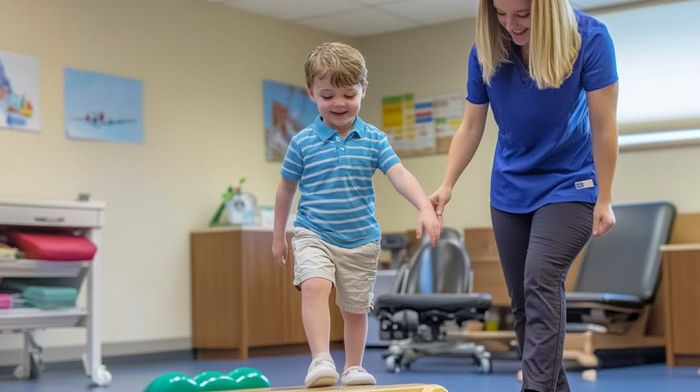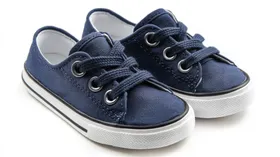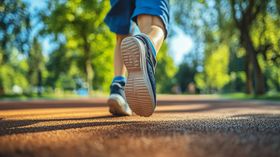5 Effective Methods to Stop Tip Toe Walking in Children
Curious about the reasons behind tip-toe walking? Understand the underlying factors and learn how to address this issue
Published December 8, 2024.

Every step tells a story; for some children, that story begins on their tiptoes. What looks like a charming childhood phase could be a window into your child's developmental world.
Whether it's a passing phase or a signal of something more, this guide will help you decode the mystery of toe walking and support your child's path to confident, healthy movement.
» Support your child's foot health with shoes designed for toe walking
What is Tip Toe Walking
Toe walking is a gait pattern where a person walks on their toes or the balls of their feet, with minimal or no contact between their heels and the ground. It's common in young children as they learn to walk, and most outgrow it naturally.
However, it may be worth investigating further if your child continues to walk predominantly on their toes past two or three. Persistent toe-walking can be associated with various conditions, including:
- Neurological disorders: Conditions such as autism spectrum disorder, muscular dystrophy, or cerebral palsy may cause individuals to adopt toe-walking as a compensatory strategy.
- Muscle tightness: Tight calf muscles can contribute to toe-walking.
- Sensory processing disorder: Some children with sensory processing disorders may find toe-walking more comfortable, especially when navigating different textures or surfaces.
- Developmental coordination disorder: Challenges with coordination and motor skills may also lead to toe-walking.
» Learn if there a connection between ADHD and toe walking
5 Ways to Manage Tip-Toe Walking
If your child continues to toe walk beyond 2 or 3, consider these strategies to help them develop a more normal walking pattern.
1. Supportive Footwear
Choosing the right shoes is crucial for kids who toe walk. The right shoe can provide the necessary support and encourage proper foot placement. When selecting shoes, consider the following:
- Firm Heel Counter: This part of the shoe holds the heel in place, preventing the foot from slipping forward and promoting a proper heel strike.
- Arch Support: A well-supported arch can help maintain proper foot alignment and reduce joint stress.
- Flexible Sole: A flexible sole allows for natural foot movement and promotes better balance and coordination.
- Adequate Cushioning: Cushioning in the sole can absorb shock and reduce discomfort.
- Secure Fit: The shoe should fit snugly around the heel and midfoot but not be too tight in the toe box.
» Discover the best footwear solutions for toe walking
2. Strength and Flexibility Exercises
A well-rounded exercise routine is key to improving toe walking. Incorporate these activities into your child's daily routine:
- Calf stretches: Hold a stretch for 30 seconds, 3-4 times daily.
- Heel-toe walks: Practice walking heel-to-toe, emphasising heel strike.
- Wall push-ups: Lean against a wall, pushing off with the heels to strengthen calf muscles.
» Check out these exercises to help with toe walking
3. Orthotics
Orthotics are custom-made shoe inserts that help correct foot alignment and improve walking patterns. They can be invaluable for children with:
- Flat feet: Orthotics can help to support the arch of the foot.
- High arches: Orthotics can help to reduce pressure on the ball of the foot.
- Muscle imbalances: Orthotics can help to correct imbalances and improve alignment.
» Explore kids' shoes for orthotics and support your little one's foot health
4. Sensory Integration
Sensory integration therapy can help children who have difficulty processing sensory information. A therapist can provide activities to improve body awareness and coordination, such as:
- Weighted Vests or Blankets: These can provide deep pressure input, calming and help with focus.
- Balance Activities: Balancing on one foot or walking on a balance beam can improve balance and coordination.
- Tactile Activities: Playing with different textures, like sand or playdough, can help improve sensory processing.
» Check out our guide for finding shoes for kids with sensory issues
5. Active Participation
Incorporating physical activities into your child's daily routine can significantly improve their walking pattern and overall development. Here are some fun and practical activities:
- Swimming: This low-impact activity strengthens the legs and core muscles. The water resistance provides a gentle workout, improving muscle tone and coordination.
- Stretching: Certain poses can improve flexibility, balance, and body awareness. Downward dog and tree poses can be particularly beneficial for strengthening the legs and ankles.
- Playful Games: Engaging in playful activities like heel-walking races, obstacle courses, and hopscotch can make exercise fun and motivating. These games can help your child practice proper walking patterns and improve their balance and coordination.
Incorporating these activities into your child's routine can help them develop strong leg muscles, improve their balance and coordination, and, ultimately, improve their walking pattern.
» Encourage their adventures with the best walking shoes for kids
When to Consult with a Healthcare Professional
While toe walking is common in young children, monitoring your child's progress is essential. Consult a healthcare professional if you notice any of the following:
- Persistent Toe Walking: If your child consistently walks on their toes without placing their heels on the ground, even after age 3, it may indicate an underlying condition.
- Asymmetrical Gait: If your child's walking pattern is uneven or favours one side, seeking professional evaluation is essential.
- Developmental Delays: If your child is experiencing delays in motor skills, speech, or social development, toe walking could be a symptom of a more complex issue.
- Pain or Discomfort: If your child complains of pain in their feet or legs, it's crucial to consult a healthcare professional to rule out any underlying conditions.
» See what shoes podiatrists approve for kids
A healthcare professional can assess your child's condition and recommend appropriate treatment, such as:
- Physical Therapy: A physical therapist can develop a personalised exercise plan to improve strength, flexibility, and coordination.
- Orthotics: Custom-made shoe inserts can help correct foot alignment and improve walking patterns.
- Botox Injections: In some cases, Botox injections can temporarily weaken tight calf muscles.
- Surgery: In severe cases, surgery may be necessary to lengthen the Achilles tendon or correct other underlying issues.
You can help your child develop healthy walking patterns and prevent potential complications by seeking early intervention.
» Learn how to pick shoes for different stages of your kid's development
Guiding Natural Gait Development
Every child's walking journey is unique, and toe walking is just one stop along the way. While most kids naturally grow out of this walking style, there's one universal truth: shoes can make a significant difference for developing kids.
That's where First Walkers stands out—with shoes designed to encourage a more natural heel-to-toe gait by providing specific features like a firm heel counter and flexible soles. By gently guiding the foot into a proper walking position, their shoes can help reduce the tendency to walk on the toes.
Disclaimer: First Walkers' information is intended for educational and informational purposes related to toddler footwear and feet. We encourage you to consider individual circumstances and consult qualified orthopaedists about specific conditions.





